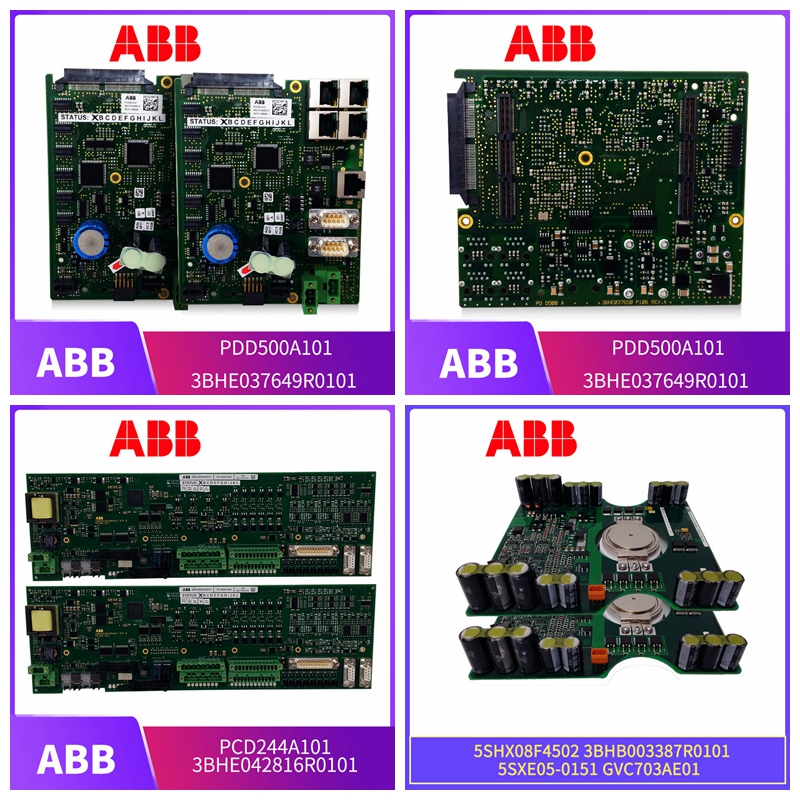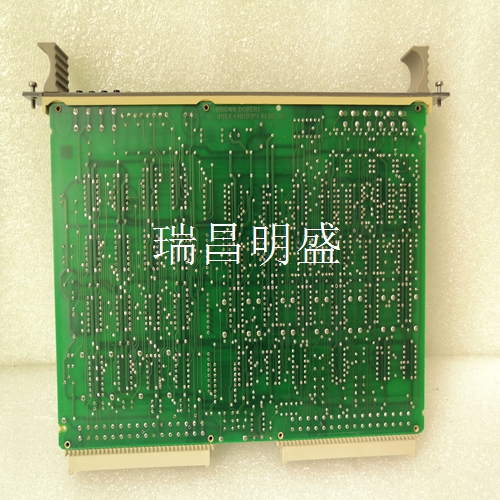DSTC190工控备件
冗余传输操作模式
能够在冗余传输模式下操作。当移除跳线E5的引脚1和引脚2之间的跳线分流器时,板被配置为冗余模式。在冗余传输模式下,无论动态数据包大小如何,每个数据包都将传输两次。网络上每个节点的接收电路评估每个冗余传输。如果在第一次传输中没有检测到错误,则使用它来更新板载存储器,第二次传输被丢弃。然而,如果第一次传输确实包含错误,则第二次传输用于更新板载存储器,前提是它没有传输错误。如果在两次传输中都检测到错误,则不会使用传输,数据将从网络中完全删除。从统计上看,冗余传输模式大大降低了任何数据从网络中丢失的可能性。然而,冗余传输模式也降低了有效的网络传输速率。单个L字(4字节)传输速率从43MB/s的非冗余速率下降到大约20MB/s。16 L字(64字节)传输速率从174MB/s的非冗余速率下降到
Redundant transmission operation mode
Capable of operating in redundant transmission mode. When the jumper shunt between pin 1 and pin 2 of jumper E5 is removed, the board is configured in redundant mode. In the redundant transmission mode, each dynamic packet will be transmitted twice, regardless of its size. The receiving circuit of each node on the network evaluates each redundant transmission. If no error is detected in the first transmission, it is used to update the onboard memory, and the second transmission is discarded. However, if the first transmission does contain errors, the second transmission is used to update the onboard memory, provided that it has no transmission errors. If errors are detected in both transmissions, the transmission will not be used and the data will be completely deleted from the network. Statistically, redundant transmission mode greatly reduces the possibility of any data loss from the network. However, redundant transmission mode also reduces the effective network transmission rate. The transmission rate of a single L-word (4-byte) is reduced from the non redundant rate of 43MB/s to about 20MB/s. The transmission rate of 16 L words (64 bytes) drops from the non redundant rate of 174MB/s to
反射存储器的基本操作
恶意数据包删除操作恶意数据包是不属于网络上任何节点的数据包。回顾反射存储器的基本操作,一个节点在网络上发起数据包,以响应来自主机的存储器写入。数据包在网络周围传输到所有节点,直到它返回始发节点。然后,要求始发节点从网络中删除分组。然而,如果分组在通过另一个节点时以某种方式被改变,或者如果始发节点开始出现故障,则始发节点可能无法将分组识别为自己的分组,并且不会将分组从网络中移除。在这种情况下,数据包将继续穿越网络。流氓包极为罕见。它们的存在表明,由于真正的组件故障或在过于恶劣的环境中操作,电路板出现故障。通常,解决方案是隔离和更换故障板和/或改善环境。然而,一些用户更愿意容忍零星的流氓数据包,而不是停止系统进行维护,前提是从网络中删除流氓包。
Basic operation of reflective memory
Malicious packet deletion Malicious packets are packets that do not belong to any node on the network. Review the basic operation of reflective memory. A node initiates data packets on the network in response to memory writes from the host. The packet is transmitted around the network to all nodes until it returns to the originating node. Then, the originating node is required to delete the packet from the network. However, if the packet is changed in some way when passing through another node, or if the originating node starts to fail, the originating node may not be able to identify the packet as its own packet and will not remove the packet from the network. In this case, the packet will continue to traverse the network. Rogue bags are extremely rare. Their existence indicates that the circuit board fails due to real component failure or operation in too harsh environment. Typically, the solution is to isolate and replace the fault board and/or improve the environment. However, some users prefer to tolerate sporadic rogue packets rather than stop the system for maintenance, provided that rogue packets are removed from the network.











